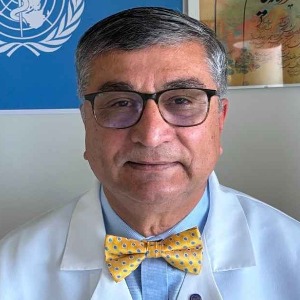10th Edition of
World Congress on Infectious Diseases & One Health
October 05-07, 2026 | Tokyo, Japan
Coronavirus Disease (COVID-19) is an infectious disease caused by a newly discovered Corona virus strain. The majority who fall sick with COVID-19 can experience delicate to moderate symptoms and recover without special treatment.
Coronaviruses are a bunch of similar RNA viruses that cause diseases in mammals and birds. In humans and birds, they cause tract infections that may vary from delicate to deadly. Mild sicknesses in humans include some cases of respiratory disease (which is additionally caused by different viruses, preponderantly rhinoviruses), whereas a lot of deadly varieties will cause SARS, MERS, and COVID-19. In cows and pigs, they cause diarrhea, whereas in mice they cause hepatitis and inflammation.
How it spreads: The virus that causes COVID-19 is principally transmitted through droplets produced once an infected person coughs, sneezes, or exhales. These droplets are too significant to hang within the air and quickly fall on floors or surfaces.
Persons can be infected by inhaling the virus if they are in close proximity of somebody who has COVID-19, or by touching a contaminated surface then eyes, nose, or mouth.
Diagnosis: Medical diagnosis is that the method of determining that a disease or condition that explains human symptoms and signs. It’s most frequently named as a diagnosis with the medical context being implicit. The information needed for diagnosis is often collected from a history and physical examination of the person seeking medical aid. Often, one or a lot of diagnostic procedures, like medical tests, are done during the method. Generally, posthumous diagnosis is considered a form of medical diagnosis.
Prevention is that the deterring of the development of an illness, or stopping the progression of a disease that has already begun. The separation of the roles of public health and medicine within the spectrum of disease prevention and treatment creates an absence of coordination in preventive care.
There are 3 levels of prevention:
Management: The complete system of care and treatment of a disease or a sick individual the management of contagious diseases.


By signing up, you agree to join our mailing list to receive information and updates.
Title : Molecular crosstalk between the host and pathogen in Streptococcus pyogenes virulence
Francis J Castellino, University of Notre Dame, United States
Title : Host brakes on viral inflammation
Saurabh Chattopadhyay, University of Kentucky College of Medicine, United States
Title : The impact of expanded adolescent vaccination against Omicron waves depends on the epidemic status: A mathematical modelling study
Anna Fairweather, University of Oxford, United Kingdom
Title : Comprehensive HIV care through integrated STI and primary care services at the LGBTQ+ Center of Southern Nevada
Darya V Fridman, The Southern Nevada LGBTQ+ Center, United States
Title : Meeting the needs of adults aged 50+ with HIV through the new opening of a primary care clinic at the LGBTQ Center of Southern Nevada
Darya V Fridman, The Southern Nevada LGBTQ+ Center, United States
Title : Camostat-polysaccharide dual-action nasal spray for mucosal barrier-driven prevention of viral infections
Yujeong Na, Daewoong Pharmaceutical Co., Ltd, Korea, Democratic People's Republic of